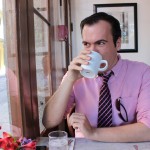At the end of the 2009-2010 academic year, CWRU president Barbara Snyder approached the Center for Civic Engagement and Learning (CCEL) with the hope of promoting more CWRU-involved community service in the Cleveland community. An important priority, Snyder also wanted to recognize the students that take the initiative to volunteer. The Civic Engagement Scholars program, a pilot for the 2010-2011 school year, is the result of this vision.
Desiring to acknowledge students who volunteered within the community, the program encourages students to accumulate 50 hours of total service, 30 hours of which must be spent with the same nonprofit organization or school in Cleveland. The student is responsible for choosing his or her own nonprofit or school to aid and is empowered to organize his or her own volunteering.
In addition to achieving the 50-hour service minimum, students are required to attend six civic engagement workshops. Three of the workshops allow students to discuss and reflect on their service. The remaining workshops allow students to pick from a menu of community focus programs, which vary from attending a seminar or lecture series to attending a benefit dinner. Multiple student groups and organizations are offering focus programs that scholars can select as a workshop.
Once students complete the required workshops and minimum number of service hours, they will be eligible to receive a certificate from president Snyder in April. At the completion of the program, CCEL hopes that students will be able to reflect on a positive year of meaningful service that enriched their college experience and brought tangible help to nonprofit organizations and schools.
“We tried to make [the program] as uncomplicated as possible,” CCEL student service coordinator Angela Lowery explains. Though there are multiple aspects to the project, each tier allows for a more fulfilled experience. Reinforcing this idea, Lowery notes the value behind the 30 hours spent with a single nonprofit or school. “Students get more from service if they do it consistently with one organization…it allows them to learn over time, and the organization has a trained volunteer that can work on a project throughout [the student’s] entire [length of service].”
The service hours serve as a quantitative representation for the hard work and dedication of the civic engagement scholars. The participants will use a Google Docs spreadsheet to log and track their own hours. The Google Docs also enables students to view the hours of their fellow volunteers and see the impact their efforts are having upon local organizations.
Outside the domain of service, students will receive information and inspiration from the six workshops embedded within the program. “The training sessions will be an opportunity for students to discuss what they’ve been doing and how far they’ve come towards completing the challenge,” said Lowery.
Closing on Sept. 23, the application period produced a total of 192 qualifiers for the Civic Engagement Scholars program.
During the recruitment period, the CCEL office communicated with both the Mistletoe Residential College and the National Service Fraternity, Alpha Phi Omega, in hopes of encouraging frequent volunteers to not only participate but to motivate new volunteers to join.
“It’s a great number,” Lowery states. “We want to accommodate as many students as possible, but is up to the student to find their own place at a school or nonprofit.”
The majority of these scholar hopefuls attended the training day for the program on Saturday, Sept. 25. “The [training day] allowed students to feel the energy of their peers,” Lowery said. One of many activities, students made posters that defined what civic engagement means to them. This allowed both individual students and the group as a whole to be on the same page in terms of their community service definition and aspirations.
Undergraduate Daniel Botros attended the training day on Sept. 25 and was impressed by the overall mission of the scholar program. “I believe this program will motivate many students to do more community service in the future,” he notes. As excited as he is to take the initiative, Botros expresses that “50 hours does seem like a lot, but it could be a way for people not as committed to service to be weeded out.” Botros also realizes that aiding one organization over a length of time is very valuable and allows his own interests to be explored. “I really want to aid food banks or pantries in whatever way I can,” he says. “Service to me is contageous and I hope other people start to catch that bug.”
Though believing it to be an admirable program, some members of the CWRU community question if this initiative will call new volunteers to action or if it will simply collect the usual suspects of volunteers. Lowery has determined that the program includes a little bit of both.
“We know the usual suspects…who think it will be fun to participate in this program,” she explained. “We also have students involved in this program that want to enhance their learning and [want to] be part of a cohort of students that are volunteering.”



